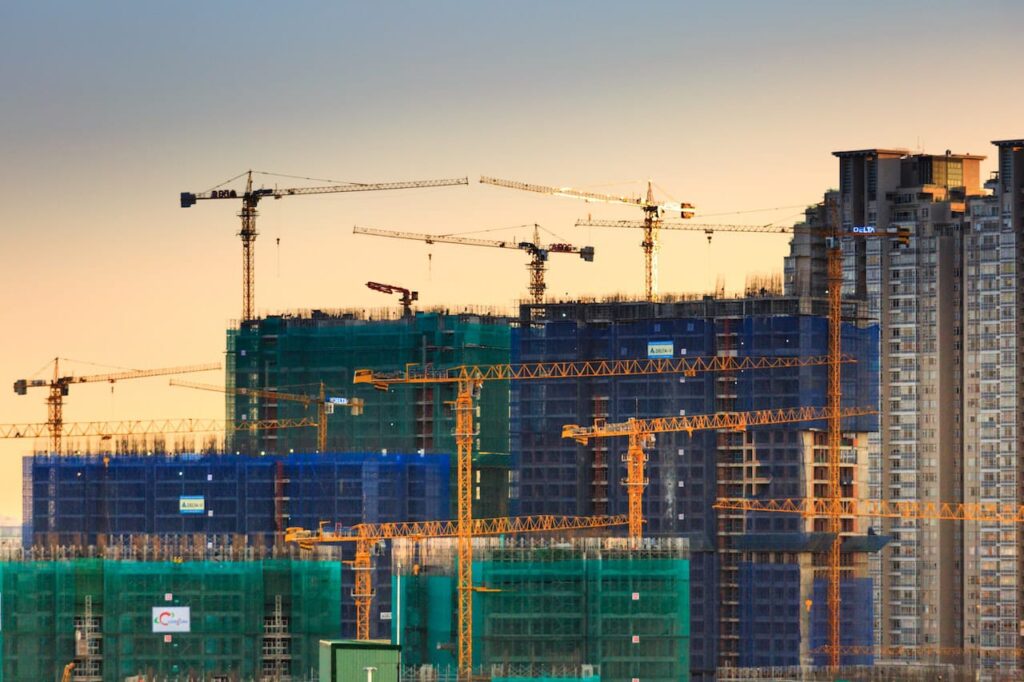
Construction sites serve as dynamic centers where proficient artisans transform architectural concepts into reality. These sites are crucial for shaping our world but also pose significant risks to those working there. This highlights the critical importance of construction safety. This guide explores essential construction safety principles for a secure work environment.
Prioritizing Safety Training
Emphasizing safety training is an enduring commitment that demands the active participation of both employers and employees. It transcends a one-time endeavor. Upon hiring, workers should undergo thorough safety training, followed by regular refresher courses.
These training programs should encompass an expansive array of subjects, ranging from the identification of potential hazards to the proper utilization of safety equipment. Frequent safety drills and simulated emergency scenarios serve as valuable tools for ingraining safety protocols into workers’ daily routines, enabling them to respond effectively in real-world situations.
Personal Protective Equipment (PPE)
Beyond the mere provision of necessary gear, employers bear the responsibility of ensuring consistent and correct usage. Supervisors should conduct periodic inspections to verify that workers possess the appropriate PPE for their respective tasks, confirming its pristine condition. Furthermore, employers should educate workers on the paramount importance of PPE, emphasizing that it represents more than a mere regulation—it embodies a lifesaving imperative.
Tailored Safety Plans for Each Site
Prescribing a generic safety plan falls short of what is required on a construction site. Every project presents a distinctive array of risks and challenges. Consequently, site-specific safety plans must be collaboratively developed, drawing upon insights from workers engaged on a daily basis. These plans ought to remain dynamic documents, perpetually updated to mirror alterations in project scope, emerging hazards, and the adoption of novel safety technologies or methodologies.
Vigilant Fall Protection Measures
Falls persist as a predominant cause of injuries and fatalities within the construction industry. Beyond the indispensable application of fall protection systems and awareness of fall hazards, before they escalate into accidents, an acute understanding of the unique fall risks associated with overhead crane operations is imperative.
Regular safety meetings should incorporate dialogues about prospective fall risks in both crane operation and work areas below the crane’s load path. Prompt implementation of mitigative solutions specific to crane-related fall hazards is critical. Encourage workers to promptly report any hazardous conditions they encounter, fostering a culture of proactive safety that addresses all aspects of construction site safety.
Ensuring Scaffolding Safety
Scaffolding-related accidents can yield catastrophic consequences. Elevating safety standards entails the establishment of stringent protocols governing scaffold assembly and usage. Prior to use, scaffold components should undergo rigorous inspection, with workers trained to discern signs of wear or damage. Furthermore, scaffolding must be erected on stable ground, securely anchored to prevent any displacement, and fortified with guardrails and toeboards to fortify protection.
Safeguarding Machinery and Equipment Operations
Heavy machinery and equipment constitute the backbone of construction activities, yet their improper handling can pose significant dangers. Employers are tasked with implementing rigorous equipment inspection and maintenance schedules.
Operators should possess certifications and undergo periodic assessments evaluating their proficiency and knowledge. The establishment of lucid communication protocols is crucial for averting accidents associated with machinery, with designated hand signals serving as an effective means of communication.
Prudent Handling of Hazardous Materials
The handling of hazardous materials necessitates meticulous attention to detail. Each container should bear clearly visible labels, and Material Safety Data Sheets (MSDS) should be easily accessible for swift and convenient reference.
Workers should undergo comprehensive training in the secure management, storage, and disposal of specific hazardous materials encountered on-site. Additionally, emergency response kits and equipment for addressing hazardous material spills should be readily available.
Preparedness for Emergencies
Emergencies are an inevitability, rendering thorough preparation essential. Define explicit evacuation routes and assembly points, ensuring all workers are thoroughly apprised of their locations. Regular emergency drills should be conducted to assess the efficiency and efficacy of the response plan. Adequate maintenance of first aid kits, fire extinguishers, and other emergency equipment, along with their strategic placement throughout the site, is indispensable.
Conclusion
Construction safety is a collective responsibility that goes beyond meeting regulations. Its primary aim is to protect lives and guarantee the safe return of each worker to their place of residence. Emphasizing comprehensive safety training, consistent use of personal protective equipment, and site-specific safety plans fosters a culture of safety, benefiting both workers and project success. Always remember, in construction, safety is paramount and requires ongoing vigilance and improvement.